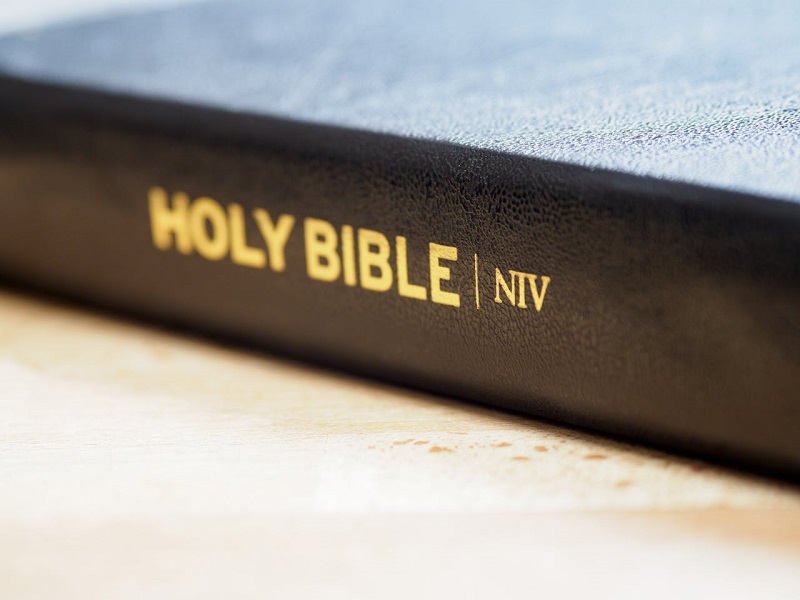Have you ever wondered what truly happened during the final hours of Jesus’ life?
John 19 offers a gripping account of betrayal, suffering, and sacrifice that resonates deeply within the Christian narrative.
By exploring this passage in depth, this article will provide you with a clear summary of John 19, highlighting its relevance and lessons that remain pertinent in today’s world.
John 19 Summary (Explained)

In John 19, the pivotal moments of Jesus’ crucifixion unfold with grave intensity and profound implications.
Pilate’s role as a hesitant governor highlights the political and spiritual tension of the trial.
His repeated declarations of Jesus’ innocence clash with the crowd’s demand for crucifixion, revealing the disturbing nature of mob mentality and the struggle of moral conviction in the face of popular opinion.
This moment is not just a historical account; it serves as a profound commentary on the complexities of justice and power.
The narrative shifts dramatically as Jesus carries His cross, a symbol of ultimate sacrifice and suffering.
His words, “It is finished,” resonate with finality, encapsulating the culmination of His mission on Earth.
Here lies an invitation for deeper reflection: rather than just a tragic end, this moment represents the beginning of grace for humanity.
The wounds inflicted become a powerful testament of love, inviting readers to explore themes of redemption and hope amidst despair, urging us to see the deeper spiritual truths that transcend time and culture.
✅ John 19 Commentary (Key Verses)
Let this devotional remind you that the cross isn’t just a symbol of death—it’s the doorway to life, forgiveness, and hope.
1. The Crown of Thorns – Love That Endures Humiliation
“Then Pilate took Jesus and had him flogged. The soldiers twisted together a crown of thorns and put it on his head. They clothed him in a purple robe and went up to him again and again, saying, ‘Hail, king of the Jews!’ And they slapped him in the face.” (John 19:1–3, NIV)
Commentary #1: The crown of thorns wasn’t just mockery—it was prophecy. The King of kings wore pain as His crown so that you could wear peace as yours. His humiliation became your healing.
Commentary #2: Even in suffering, Jesus stayed silent and steadfast. When you’re misunderstood or mistreated, remember the strength of Christ—quiet, patient, and anchored in love.
2. The Innocent Savior Condemned
“Once more Pilate came out and said to the Jews gathered there, ‘Look, I am bringing him out to you to let you know that I find no basis for a charge against him.’ … But they shouted, ‘Crucify! Crucify!’” (John 19:4–6, NIV)
Commentary #1: Pilate saw no fault in Jesus, yet He was condemned. Innocence took the place of guilt—yours and mine. That’s grace at its fullest.
Commentary #2: Even when the crowd turned against Him, Jesus remained focused on His mission. Sometimes God’s plan requires you to stand firm while the world misunderstands you.
3. The Power Behind the Cross
“‘Do you refuse to speak to me?’ Pilate said. ‘Don’t you realize I have power either to free you or to crucify you?’ Jesus answered, ‘You would have no power over me if it were not given to you from above.’” (John 19:10–11, NIV)
Commentary #1: Jesus reminds Pilate—and us—that God is sovereign. No power on earth can override His purpose for your life.
Commentary #2: Even in apparent weakness, Jesus displayed divine authority. Remember: you are never powerless when you stand in God’s will.
4. The Journey to Calvary – Bearing the Cross
“So the soldiers took charge of Jesus. Carrying his own cross, he went out to the place of the Skull (which in Aramaic is called Golgotha).” (John 19:16–17, NIV)
Commentary #1: Jesus carried the cross so you wouldn’t have to bear the weight of your sins. Every step was an act of love.
Commentary #2: Sometimes God calls you to carry difficult burdens. Remember, even the Savior’s path to victory went through pain—but it ended in glory.
5. The King on the Cross
“Pilate had a notice prepared and fastened to the cross. It read: JESUS OF NAZARETH, THE KING OF THE JEWS.” (John 19:19, NIV)
Commentary #1: Even Pilate’s sign proclaimed the truth: Jesus is King. The cross didn’t strip Him of His crown—it revealed His true majesty.
Commentary #2: When life seems to mock your faith, remember that God’s truth stands tall. His identity and His promises cannot be erased.
6. Compassion at the Cross
“When Jesus saw his mother there, and the disciple whom he loved standing nearby, he said to her, ‘Woman, here is your son,’ and to the disciple, ‘Here is your mother.’” (John 19:26–27, NIV)
Commentary #1: Even in agony, Jesus cared for others. Love was His final act. You are never too broken to love or be loved.
Commentary #2: Jesus’ compassion reminds us that family is God’s gift—sometimes through blood, sometimes through faith. In Christ, we are all connected.
7. The Humanity of Christ
“Later, knowing that everything had now been finished, and so that Scripture would be fulfilled, Jesus said, ‘I am thirsty.’” (John 19:28, NIV)
Commentary #1: Jesus’ thirst shows His humanity—He fully entered our pain so He could redeem it. He understands every ache of your heart.
Commentary #2: His thirst also fulfilled prophecy, proving that God keeps His promises even in suffering. Every word He speaks comes true.
8. The Triumph of Redemption
“When he had received the drink, Jesus said, ‘It is finished.’ With that, he bowed his head and gave up his spirit.” (John 19:30, NIV)
Commentary #1: These three words changed everything. “It is finished” means your debt is paid, your guilt erased, and your salvation secured.
Commentary #2: Jesus didn’t die in defeat—He declared victory. Whatever you’re facing, remember: in Christ, the final word is always triumph.
9. The Pierced Side: The Flow of Grace
“But when they came to Jesus and found that he was already dead, they did not break his legs. Instead, one of the soldiers pierced Jesus’ side with a spear, bringing a sudden flow of blood and water.” (John 19:33–34, NIV)
Commentary #1: The blood and water symbolize cleansing and new life. From His wounded side flows forgiveness and renewal for all who believe.
Commentary #2: Grace doesn’t just cover your sin—it washes it away. The cross is the fountain of mercy that never runs dry.
10. Burial in Hope: Joseph and Nicodemus’ Act of Faith
“Later, Joseph of Arimathea asked Pilate for the body of Jesus… He was accompanied by Nicodemus… Taking Jesus’ body, the two of them wrapped it, with the spices, in strips of linen.” (John 19:38–40, NIV)
Commentary #1: These men stepped out of secrecy to honor Jesus. True faith shows up when it matters most.
Commentary #2: Even in death, there was hope. The burial wasn’t the end—it was the beginning of resurrection. Your dark seasons can become the soil for new life.
✅ John 19 Lessons & Takeaways
1. God’s love endures even in the darkest moments.
2. The cross is not a symbol of defeat—it’s the ultimate victory.
3. Jesus understands your pain and stands with you in it.
4. True faith takes courage, especially when hope seems lost.
5. The story didn’t end at the tomb—it began there.
John 19 Summary (Conclusion)
The story of John 19 reminds us that love always wins.
The cross, though a picture of suffering, shines as the greatest symbol of victory and grace. Jesus endured the crown of thorns so you could wear a crown of life.
He faced condemnation so you could walk in freedom. Every drop of blood, every word spoken, and every breath surrendered was for you.
When He said, “It is finished,” He wasn’t giving up—He was finishing the greatest rescue mission in history.
So, whenever you feel unworthy or weary, look to the cross.
It’s where your worth was proven, your hope secured, and your future redeemed. Because of the cross, you can live every day in peace, knowing that God’s love has the final say.
Frequently Asked Questions
1. What is the main message of John 19?
The main message of John 19 is the sacrificial love of Jesus Christ. It highlights His crucifixion, showing that through His suffering, humanity received forgiveness and eternal hope.
2. Why did Jesus say “It is finished” in John 19:30?
When Jesus said, “It is finished,” He declared that His mission to save humanity was complete. The debt of sin was paid in full, and salvation became available to all who believe.
3. What does the crown of thorns symbolize in John 19?
The crown of thorns symbolizes mockery, pain, and ultimately, Jesus’ victory over sin and shame. He wore a crown of suffering so that believers could receive a crown of glory.
4. How does John 19 show Jesus’ love for humanity?
John 19 reveals Jesus’ love through His willingness to endure humiliation, torture, and death. Even in agony, He showed compassion for others and fulfilled God’s plan of redemption.
5. What can Christians learn from John 19 today?
Christians can learn that God’s love never fails, even in hardship. The cross reminds us that every struggle can lead to victory and that faith in Christ brings unending peace and purpose.
Other Blog Posts

Grounded in faith and driven by purpose, I’m a Christian blogger and online research specialist with a passion for God’s Word, lifelong learning, and healthy living.
